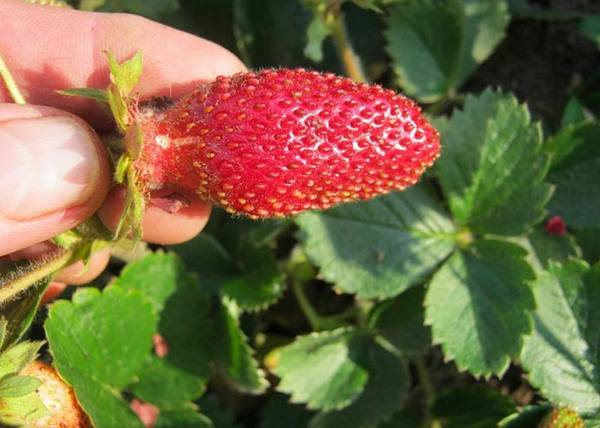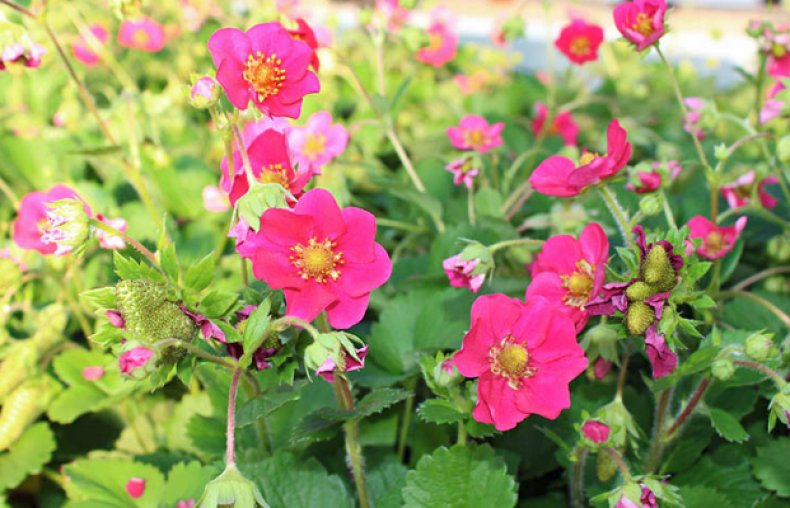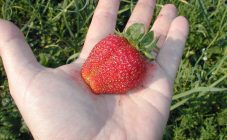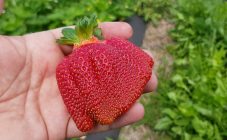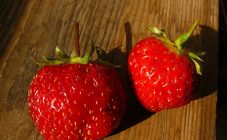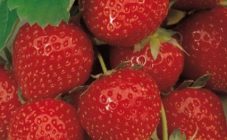Any experienced amateur gardener knows very well that strawberries in the garden reproduce most often by growing young shoots, from which new seedlings are subsequently formed. But there are certain types of strawberry plants that are bred only through seedlings, which is why none of their agronomic parameters suffers. Moreover, they have a definite advantage over the usual varieties, which is manifested in the accelerated development and reduction of the time for the appearance of berries.
We are talking about such an unusual representative of horticultural berry crops, like the Tristan f1 strawberry. This variety should be attributed to the hybrid varieties of garden plants, which are most often classified as ornamental. Their rosettes noticeably stand out against the general background of strawberry bushes due to their bright pink inflorescences and are often used for decorative design of garden areas and plots.
They are often planted in garden flower beds, as well as summer terraces and small balconies in summer cottages. But this berry attracts gardeners not only for its decorative properties. If we proceed from the numerous reviews of people involved in cultivating Tristan strawberries, then we will have to admit that its berries are very sweet in taste and have a rather delicate strawberry aroma.
Description and characteristics
Tristan cherry strawberry differs from most other remontant strawberry plants by the compactness of its bushes, which do not exceed 25 cm in height and 30 cm in diameter, as well as the absolute absence of antennae. This feature of the Tristan F1 hybrid allows you to grow it in small areas and even in household containers of sufficient volume (in pots, for example).
The general characteristics of this plant can be supplemented by the following properties:
- The inflorescences of the culture appear quite early, releasing a large number of large flowers with a dark pink tint.
- The first berries begin to ripen around the middle of June.
- Abundant fruiting of bushes of this variety continues during the entire growing season, which lasts no more than 4 months, and on unprotected soil it may not stop until autumn frosts.
In appearance, Tristan strawberries (also called garden strawberries) are very even, relatively large and weigh about 25-30 grams. They resemble a double cone in their shape, and in color they are dark red with a glimpse.
The taste of the fruits of this variety is considered to be dessert, while the hybrid itself is classified as highly productive, ensuring the collection of berries not only from the main (mother) bushes, but also simultaneously from the daughter outlets located nearby. The additional fee is not so high, but it is guaranteed even without rooting of the cuttings.
Tristan strawberries, the description of the variety of which was considered in this section, perfectly retain their shape in conditions of long-term storage, which allows them to be transported over long distances. This property implies the possibility of their use for commercial purposes (that is, for sale).
Growing and care
The cultivation of a varietal hybrid strawberry is carried out only through planting seedlings, and the time for sowing seeds is chosen in early spring (late February - very early March). For this purpose, a special soil substrate is prepared in advance, mixed with peat and lime flour, which is then well moistened. This soil is subsequently sown with pre-selected seed material.
Cover the container with the sprouts that have not yet hatched with polyethylene, preferably immediately after they are planted.
At the moment when the first sprouts with barely outlined leaves erupt from the ground, they will need to be carefully transplanted into separate pots (dive). This usually happens about a month after sowing the seeds. The readiness of seedlings for planting in open (unprotected) ground is determined by the appearance of 5 true leaves, observed about a month after the completion of the pick.
Caring for the planted sprouts is quite simple, but provided that they are dealt with regularly. First of all, it involves the timely watering of green sprouts, after which there should be no excess moisture in the beds. For the normal development of the bushes, fertilizing with mineral fertilizers will also be required, which is carried out at least twice a season.
In addition, decorative strawberries are additionally fed with folk remedies made from a pinch of vitriol dissolved in a bucket of warm water, as well as a few drops of iodine and potassium permanganate. Such a homemade mixture in liquid form is applied directly under the growing bushes.
Advantages and disadvantages
The main advantages of this decorative variety include:
- A very long fruiting period, lasting almost all summer, until the onset of autumn cold weather.
- Excellent taste of berries, in no way inferior to strawberries.
- The relatively large size of strawberry fruits and, as a result, a rich harvest.
- Simple enough care for a plant that does not need to remove new shoots.
Most amateur gardeners enthusiastically speak of the Tristan variety as an unpretentious ornamental plant that has practically no flaws and brings a good harvest, albeit not large, but very tasty berries.
In the final part of the review, we note that growing this variety in a summer cottage is not a difficult task, one might say pleasant. When breeding Tristan, in addition to obtaining a sweet and fragrant berry, it will be possible to use it to decorate the veranda or balcony of a residential building.
